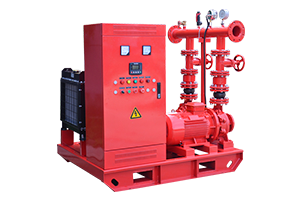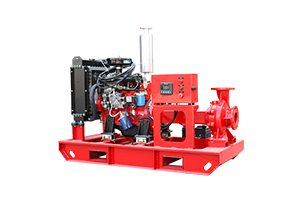-
 Nov 26, 2024Which Fire Pump Offers the Longest Lifespan?Discover which fire pump type—electric, diesel, or jockey—offers the longest lifespan. Learn key factors affecting durability and tips to maximize longevity.View details
Nov 26, 2024Which Fire Pump Offers the Longest Lifespan?Discover which fire pump type—electric, diesel, or jockey—offers the longest lifespan. Learn key factors affecting durability and tips to maximize longevity.View details -
 Nov 25, 2024What Is a Jockey Pump and Why Is It Important?Discover what a jockey pump is and why it's crucial for fire protection systems. Learn how it maintains pressure, reduces costs, and ensures system readiness.View details
Nov 25, 2024What Is a Jockey Pump and Why Is It Important?Discover what a jockey pump is and why it's crucial for fire protection systems. Learn how it maintains pressure, reduces costs, and ensures system readiness.View details -
 Nov 25, 2024How to Save Energy with an Electric Fire Pump?Discover practical tips to save energy with electric fire pumps, from using VFDs and efficient motors to optimizing design and regular maintenance.View details
Nov 25, 2024How to Save Energy with an Electric Fire Pump?Discover practical tips to save energy with electric fire pumps, from using VFDs and efficient motors to optimizing design and regular maintenance.View details -
 Nov 22, 2024How to Install a Fire Pump System Safely?Installing a fire pump system safely requires a detailed approach to ensure compliance with industry standards and optimal functionality. Below is a step-by-step guide:
Nov 22, 2024How to Install a Fire Pump System Safely?Installing a fire pump system safely requires a detailed approach to ensure compliance with industry standards and optimal functionality. Below is a step-by-step guide:
View details -
 Nov 22, 2024How to Choose the Right Fire Fighting Pump for Your Building?Choosing the right fire-fighting pump for your building is critical for ensuring safety and compliance with local regulations. Here's a step-by-step guide to help you make the right choice:
Nov 22, 2024How to Choose the Right Fire Fighting Pump for Your Building?Choosing the right fire-fighting pump for your building is critical for ensuring safety and compliance with local regulations. Here's a step-by-step guide to help you make the right choice:
View details -
 Nov 21, 2024Can Fire Pumps Be Used in Extreme Altitude Environments?Yes, fire pumps can be used in extreme altitude environments, but certain factors need to be considered and adjustments made to ensure proper operation and compliance with performance requirements. Here's a detailed look:
Nov 21, 2024Can Fire Pumps Be Used in Extreme Altitude Environments?Yes, fire pumps can be used in extreme altitude environments, but certain factors need to be considered and adjustments made to ensure proper operation and compliance with performance requirements. Here's a detailed look:
View details






